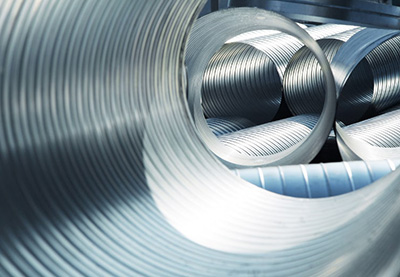Standard ductwork sizes

Following the Standard is a Better All Round Choice
Phil Johnson of ADCAS puts the case for the Association’s current drive for standardisation in circular ductwork systems. Choice is a fine thing, within reason. However, since the Latham Report, the UK construction industry has been tasked with avoiding unnecessary cost by using standard sizes for components wherever possible.
The standards have been set without prejudice to reasonable choice. Committees of industry professionals throughout Europe have laboured long and hard to formulate optimum size ranges for virtually every building component. It’s a testimony to their hard work that the standards for circular ductwork incorporated in BS/EN 1506:2007 still offer a very reasonable range of selection to the designer.
Publication of this standard is timely. A few years ago ADCAS campaigned alongside other industry bodies including B&ES, CIBSE, BSRIA and HEVAC to rationalise the standard sizes of circular ductwork.
Now there are reports that some system designers are again reverting to non-standard sizes such as 224mm and 280mm, which were declared non-standard back in 2001. The old 180mm and 224mm sizes are also still being requested for dust and fume removal systems.
All of these sizes – along with 600mm ducts – were supposed to be phased out, so ADCAS is tactfully reminding the industry of this fact and of the problems non-standard sizing can cause.
The problem is an historic one. The old imperial duct dimensions went up in increments of inches and many of these sizes were matched with a metric equivalent as a gesture towards the new “European” way. Old habits die hard and, as a result, certain UK designers are still insisting on using ductwork sizes that just don’t exist anywhere else in Europe. We must make them aware of the problems this causes.
Key advantage
The irony is that the key advantage of circular ductwork rests on standardisation. The whole concept is to use this type of ducting for areas where standard sizes can be applied. Rectangular ductwork is custom made for areas where the standard approach is not possible.
Circular ducts - and all the ancillary components from volume control and fire dampers to VAV boxes and attenuators that go with them - are designed to be available on short delivery times – often ex stock. Producing non-standard sizes takes up warehouse room that should be devoted to standard products. It adds unnecessary cost at every level up to and including transport to site. Non-standard items probably account for as much as 10% of the total stock value.
Reducing the range of ductwork and components as required by the standard makes it possible for manufacturers to offer a good selection of standard products at competitive prices – and for prompt delivery.
Large projects frequently utilise all three types of the primary ductwork system; flat oval, circular and rectangular. Non-standard sizing makes it more difficult to integrate circular ductwork into the modular systems, which are now increasing in popularity.
ADCAS believes that this is a problem that must be tackled at the earliest possible stage of the project and we’ve been speaking to designers, consultants and clients to highlight the issues involved.
We’ve even approached the software houses that provide design programmes for building services, because if they could build simple alarms to flag up non-standard sizing, the problem could be stopped before it starts. At least one such system is now available on the market.
Phil Johnson is Managing Director, Hotchkiss Air Supply and Chairs the ADCAS’ Associates Committee.



.JPG)


